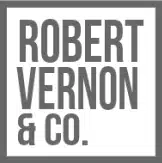The shift to digital marketing
As we navigate through the digital age, it’s no secret that the landscape of marketing has undergone a significant transformation. With the rise of social media, email marketing, and online advertising, many businesses have shifted their focus primarily to digital channels. While digital marketing undoubtedly offers numerous advantages, it’s essential not to overlook the power and value of printed materials in reaching and engaging with target audiences.
The power of print: The tangible and personal experience
In a world saturated with digital content, printed materials provide a refreshing alternative. The physical nature of print creates a tangible experience that engages multiple senses. Holding a beautifully designed brochure or flipping through the pages of a magazine allows for a more immersive and personal connection with the content. This tactile experience fosters a deeper level of engagement and leaves a lasting impression on the reader.
Printed materials also have a unique ability to command attention. In a digital landscape filled with constant distractions, print stands out as a focused and uninterrupted medium. When someone receives a physical piece of mail or stumbles upon a well-placed flyer, their attention is immediately captured. This undivided attention allows for a more meaningful interaction with the content and increases the likelihood of the message being absorbed and remembered.
Advantages of printed materials in marketing
While digital marketing certainly offers its advantages, printed materials possess unique qualities that can significantly enhance a marketing strategy. One of the key advantages of print is its ability to evoke emotions and create a sense of trust. Research has shown that people tend to perceive information presented in print as more credible compared to digital sources. By leveraging this trust factor, businesses can effectively establish their brand as reliable and trustworthy, fostering strong customer relationships.
Printed materials also provide a sense of permanence and longevity. Unlike digital content that can easily be deleted or forgotten, printed materials have a physical presence that can be revisited time and time again. Whether it’s a well-designed business card left behind after a meeting or a brochure kept on a coffee table, print materials serve as a constant reminder of a brand and its offerings, increasing the chances of future engagement and conversions.
The role of printed materials in brand building
In the age of digital marketing, building a strong brand has become more important than ever. Printed materials play a crucial role in brand building by allowing businesses to express their identity and values in a tangible and visually appealing way. From the selection of colors and fonts to the design and layout, every aspect of print materials contributes to shaping the brand image.
Moreover, printed materials offer a unique opportunity for customization and personalization. By tailoring the content to specific target audiences, businesses can create a more meaningful connection and resonate with their customers on a deeper level. Whether it’s a personalized direct mail campaign or a custom-designed brochure, print materials provide a platform for brands to showcase their uniqueness and stand out in a crowded marketplace.
Print vs. digital: Finding the right balance
While printed materials offer undeniable benefits, it’s crucial to find the right balance between print and digital marketing strategies. In today’s interconnected world, the most successful marketing campaigns integrate both mediums seamlessly. By combining the strengths of print and digital, businesses can amplify their message and reach a broader audience.
Finding the right balance involves understanding the target audience and their preferences. Some demographics may respond better to digital channels, while others may prefer the tactile experience of print. Conducting market research and gathering data can provide valuable insights into the preferences and behaviors of the target audience, enabling businesses to tailor their marketing mix accordingly.
How to incorporate printed materials in your marketing strategy
Incorporating printed materials into a marketing strategy requires careful planning and execution. Here are some effective ways to integrate print into your overall marketing efforts:
1. Direct mail campaigns:
Utilize direct mail campaigns to target specific segments of your audience. Personalize the content and design to create a more impactful and relevant experience for the recipient.
2. Brochures and catalogs:
Design visually appealing brochures and catalogs that showcase your products or services. Distribute them at trade shows, events, or include them in customer packages.
3. Business cards:
Invest in well-designed business cards that reflect your brand identity. Hand them out during networking events or leave them behind after meetings to make a memorable impression.
4. Print advertisements:
Consider placing print advertisements in relevant publications that align with your target audience. This allows you to reach a specific demographic in a trusted and respected medium.
Targeting the right audience with printed materials
To maximize the effectiveness of printed materials, it’s essential to target the right audience. By identifying the demographics, interests, and behaviour’s of your target market, you can ensure that your print materials resonate with the intended recipients.
Market research and data analysis play a pivotal role in understanding the preferences and habits of your audience. By leveraging customer data, businesses can create highly targeted print materials that speak directly to the needs and desires of their customers. This personalization enhances the effectiveness of the marketing message and increases the likelihood of conversion.
The cost-effectiveness of printed materials
Contrary to popular belief, printed materials can be a cost-effective marketing tool when used strategically. While digital marketing often incurs ongoing costs, such as advertising fees or software subscriptions, print materials can be produced in bulk and distributed over time, reducing overall expenses. Additionally, print materials have a longer lifespan and can generate leads and conversions long after the initial distribution.
Businesses can also explore cost-saving measures by utilizing efficient printing techniques and materials. Working closely with printing companies can help optimize print runs, minimize waste, and find the most cost-effective options without compromising on quality.
Case studies: Successful print marketing campaigns
To illustrate the power of print materials in marketing, let’s explore a few successful case studies:
1. Nike’s Printed Magazine:
Nike launched a printed magazine called “Nike Women” that targeted female athletes and fitness enthusiasts. By providing valuable content and visually stunning imagery, the magazine not only promoted Nike’s products but also established the brand as a trusted authority in the fitness industry.
2. Coca-Cola’s “Share a Coke” Campaign:
Coca-Cola’s “Share a Coke” campaign utilized personalized printed labels on their bottles. By printing popular names and phrases, Coca-Cola encouraged social sharing and sparked conversations around their brand, resulting in increased sales and brand loyalty.
3. BMW’s Direct Mail Campaign:
BMW created a highly targeted direct mail campaign that sent personalized brochures to potential customers who were in the market for a luxury vehicle. The campaign resulted in a significant increase in test drives and ultimately led to a boost in sales.
These case studies highlight the effectiveness of print materials in capturing attention, creating engagement, and driving tangible results.
Embracing the synergy of print and digital marketing
In conclusion, while digital marketing has become an integral part of any marketing strategy, the power of printed materials should not be underestimated. The tangible and personal experience offered by print, along with its ability to evoke emotions and build trust, makes it a valuable tool in a marketer’s arsenal.
By finding the right balance between print and digital, businesses can create a synergy that allows them to reach and engage with their target audience more effectively. Incorporating printed materials strategically, understanding the preferences of the audience, and leveraging cost-effective measures can enhance the overall marketing efforts and drive tangible results.
So, as we navigate the ever-evolving digital age, let’s not forget the enduring impact of print in creating memorable brand experiences and fostering lasting connections with customers. For tailored insights and guidance on optimizing your print and digital marketing blend, consider consulting with a Print Industry Consultant. Check out our blog for more information on how to harness the combined power of print and digital for unparalleled marketing success.
Contact us today to learn how our printing services can enhance your marketing strategy and help you stand out in the digital age.

